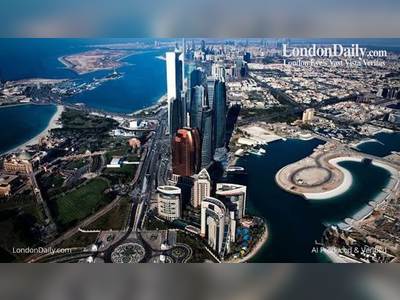
Eurozone raises interest rates for first time in 11 years
The European Central Bank (ECB) has raised interest rates for the first time in more than 11 years as it tries to control soaring eurozone inflation.
The ECB increased its key interest rate by 0.5 percentage points to 0.0% and plans further hikes this year.
The rate has been negative since 2014 in a bid to boost the region's economy after years of weak growth.
But consumer prices rose at a record 8.6% in the 12 months to June as food, fuel and energy costs soared.
That is well above the bank's 2% target.
It comes after the Bank of England and the US Federal Reserve also put up their rates to try and rein in rising prices.
Inflation is the pace at which prices are rising. For example, if a bottle of milk costs €1 and that rises by 5 cents compared with a year earlier, then milk inflation is 5%.
The Ukraine war and Covid supply chain issues have driven up everyday costs across the world, putting pressure on households.
The eurozone is vulnerable because it relies heavily on Russia for its oil and gas. This week it urged member states to begin rationing supplies amid fears Moscow will halt gas deliveries this year, causing further price spikes.
Explaining its decision to raise rates, ECB president Christine Lagarde said: "Economic activity [in the eurozone] is slowing. Russia's unjustified aggression towards Ukraine is an ongoing drag on growth.
"We expect inflation to remain undesirably high for some time owing to continued pressure from energy and food prices and pipeline pressures in the pricing chain," she added.
The bank says further rate hikes "will be appropriate" and that it will take a "meeting-by-meeting" approach to raising rates.
The idea is that by making it more expensive to borrow money, people will spend less, bringing down demand and therefore prices.
However, there are also concerns that higher rates could push the bloc into recession - which is defined as two successive quarters of economic decline.
These fears helped push the euro to a 20-year low against the dollar in recent weeks.
The ECB began cutting interest rates after the 2008 financial crisis to stimulate growth, and took them as low as -0.5% during the pandemic.
However, earlier this year it signalled it planned to increase them again, although economists had only expected an increase of 0.25 percentage points in July.
The rate has been negative since 2014 in a bid to boost the region's economy after years of weak growth.
But consumer prices rose at a record 8.6% in the 12 months to June as food, fuel and energy costs soared.
That is well above the bank's 2% target.
It comes after the Bank of England and the US Federal Reserve also put up their rates to try and rein in rising prices.
Inflation is the pace at which prices are rising. For example, if a bottle of milk costs €1 and that rises by 5 cents compared with a year earlier, then milk inflation is 5%.
The Ukraine war and Covid supply chain issues have driven up everyday costs across the world, putting pressure on households.
The eurozone is vulnerable because it relies heavily on Russia for its oil and gas. This week it urged member states to begin rationing supplies amid fears Moscow will halt gas deliveries this year, causing further price spikes.
Explaining its decision to raise rates, ECB president Christine Lagarde said: "Economic activity [in the eurozone] is slowing. Russia's unjustified aggression towards Ukraine is an ongoing drag on growth.
"We expect inflation to remain undesirably high for some time owing to continued pressure from energy and food prices and pipeline pressures in the pricing chain," she added.
The bank says further rate hikes "will be appropriate" and that it will take a "meeting-by-meeting" approach to raising rates.
The idea is that by making it more expensive to borrow money, people will spend less, bringing down demand and therefore prices.
However, there are also concerns that higher rates could push the bloc into recession - which is defined as two successive quarters of economic decline.
These fears helped push the euro to a 20-year low against the dollar in recent weeks.
The ECB began cutting interest rates after the 2008 financial crisis to stimulate growth, and took them as low as -0.5% during the pandemic.
However, earlier this year it signalled it planned to increase them again, although economists had only expected an increase of 0.25 percentage points in July.










